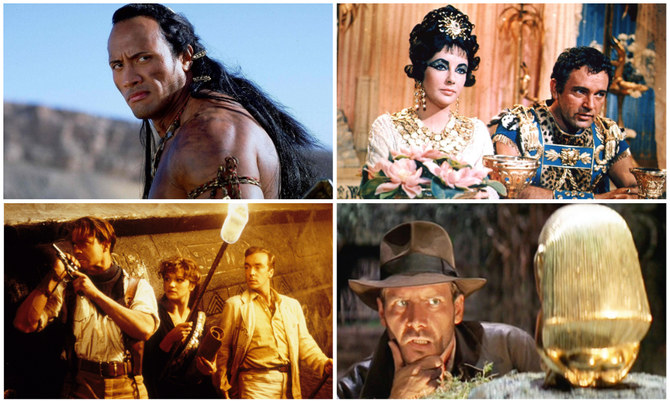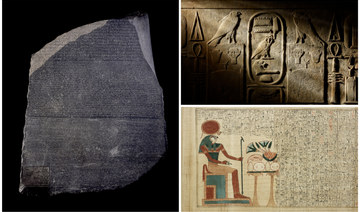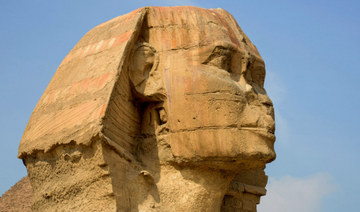LONDON: From complicated love triangles, to bikini-clad dancers to horses 1,300 years out of date — British newspaper Daily Mail has rated some of Hollywood’s biggest films for their accuracy in portraying ancient Egypt on the big screen.
The one hundredth anniversary of Howard Carter’s discovery of Tutankhamun’s tomb falls in a week’s time, and the daily has marked the anniversary by highlighting what blockbuster films got right — and horribly wrong — when depicting one of humanity’s greatest civilizations.
History correspondent Harry Howard picked out Dwayne “The Rock” Johnson’s big break in the 2002 film “The Scorpion King,” saying there were, in fact, two real life ‘Scorpion Kings’ about 5,000 years ago. However, the film’s use of horses — which didn’t arrive in Egypt until about 1,700 BC — and the fact The Rock dons a pair of trousers throughout the film definitely mark it down.
Next up was the Harrison Ford-starring “Indiana Jones: Raiders of the Lost Ark.” According to Howard, the Nazi obsession with ancient Egypt was correctly depicted in the 1980s classic, as was the legend surrounding the Ark of the Covenant, but high-ranking National Socialists never attempted to find the Ark as they did in the film.
In for a skewering from Howard was 1999’s “The Mummy,” which depicts the love story between high priest Imhotep and Anck-su-namun, the alleged mistress of Pharaoh Seti I.
The lovers were real figures in ancient Egypt, but the film got its dates all wrong — including misplaced pyramids — and misrepresented Anck-su-namun who was actually the wife of the great Tutankhamun.
And the infamous scene with the scarab beetles? The creepy-crawlies eat dung and aren’t the flesh-eating stuff of nightmares depicted in the film.
One film that fared better in its depiction of ancient Egypt was the 1963 classic “Cleopatra,” starring Elizabeth Taylor and Richard Burton, including the accurate portrayal of the eponymous queen’s smuggling in a carpet to meet Julius Caesar in the first century BC, the love affair with Marc Anthony and their dramatic suicide.
However, it was marked down for its costume design — Taylor’s plunging neck-lines and figure-hugging dresses were a far cry from the traditional, conservative attire donned by women in the period depicted.
Meanwhile, Howard praised the film’s depiction of the life of Moses, but reserved criticism of “whitewashing” for the 1956 Charlton Heston epic “The Ten Commandments,” highlighting how all of the north African and Middle Eastern characters were played by white actors.
And the historian was clear in his dismissal of “Egyptian dancers in green bikinis” as a definite historical faux pas.














